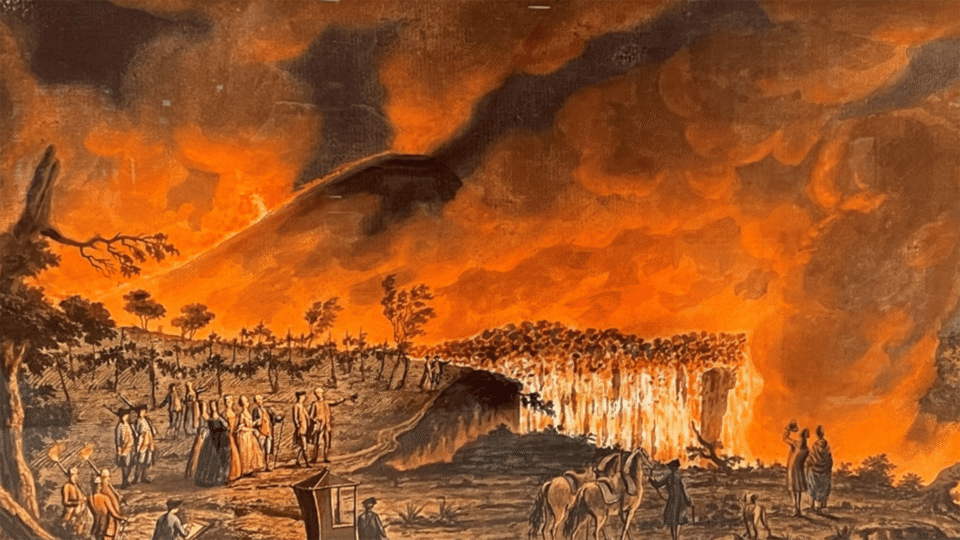A team of engineers at the University of Melbourne in Australia have brought to life a unique piece of art depicting a cataclysmic eruption of Italy’s Mount Vesuvius. The 250-year-old artwork fuses art with engineering to simulate a volcanic eruption on the famed mountain during the 18th century. The same volcano destroyed the Roman city of Pompeii in southern Italy and killed roughly 2,000 people in 79 CE.
The original concept was designed in 1775 by Sir William Hamilton. Hamilton was the British ambassador to Naples and Sicily from 1765 to 1800 and also a vulcanologist. Hamilton observed Mount Vesuvius eruptions in 1767, 1779, and 1794, carefully noting changes to the 4,000-feet high crater. Hamilton is believed to have climbed Mount Vesuvius more than 65 times, even after a friend was severely burned by volcanic rock. He also sponsored the documentation of Mount Vesuvius’s daily activity from 1779 to 1794.
Hamilton’s fusion of art and clockwork is based on a watercolor painting from 1771 by British-Italian artist Pietro Fabris called “Night view of a current of lava.” Hamilton’s take on the painting called for light and motion to animate Mount Vesuvius’ lava flows and explosions. While scientists and historians are unclear if the mechanism to animate the painting was ever built in Hamilton’s time, a detailed sketch housed in the Bordeaux Municipal Library in France provided engineers with a blueprint.

“It is fitting that after 250 years exactly, our students have brought this dormant project to life,” Richard Gillespie, Senior Curator in the Faculty of Engineering and Information Technology collections at the University of Melbourne, said in a statement. “It is a wonderful piece of science communication. People around the world have always been fascinated by the immense power of volcanos.”
The piece itself was brought to life by Master’s students Xinyu Xu and Yuji Zeng. The pair spent three months building the device in a student workshop called The Creator Space. With the help of some modern materials and techniques–including laser-cut timber, programming LED lighting, and electronic control systems–to reimagine Hamilton’s clockwork-driven design.
[ Related: Mount Vesuvius eruption turned a victim’s brain into glass. ]
“The project offered a wealth of learning opportunities. I’ve extended many skills, including programming, soldering and physics applications,” said Xu, a mechatronics student.
Zeng, a mechanical engineering student, added that this project provided him with a new perspective on how to apply his studies.
“It was a fantastic way to build my hands-on problem-solving skills,” said Zeng. “We still faced some of the challenges that Hamilton faced. The light had to be designed and balanced so the mechanisms were hidden from view.”
The device is the centerpiece of “The Grand Tour,” an exhibition which opened on Monday in the University’s Baillieu Library. According to the university, “[it] explores the cultural right-of-passage undertaken across the Italian Peninsula by, predominately, young British upper-class men during the eighteenth century.”
“The Grand Tour” runs until June 28, 2026.


